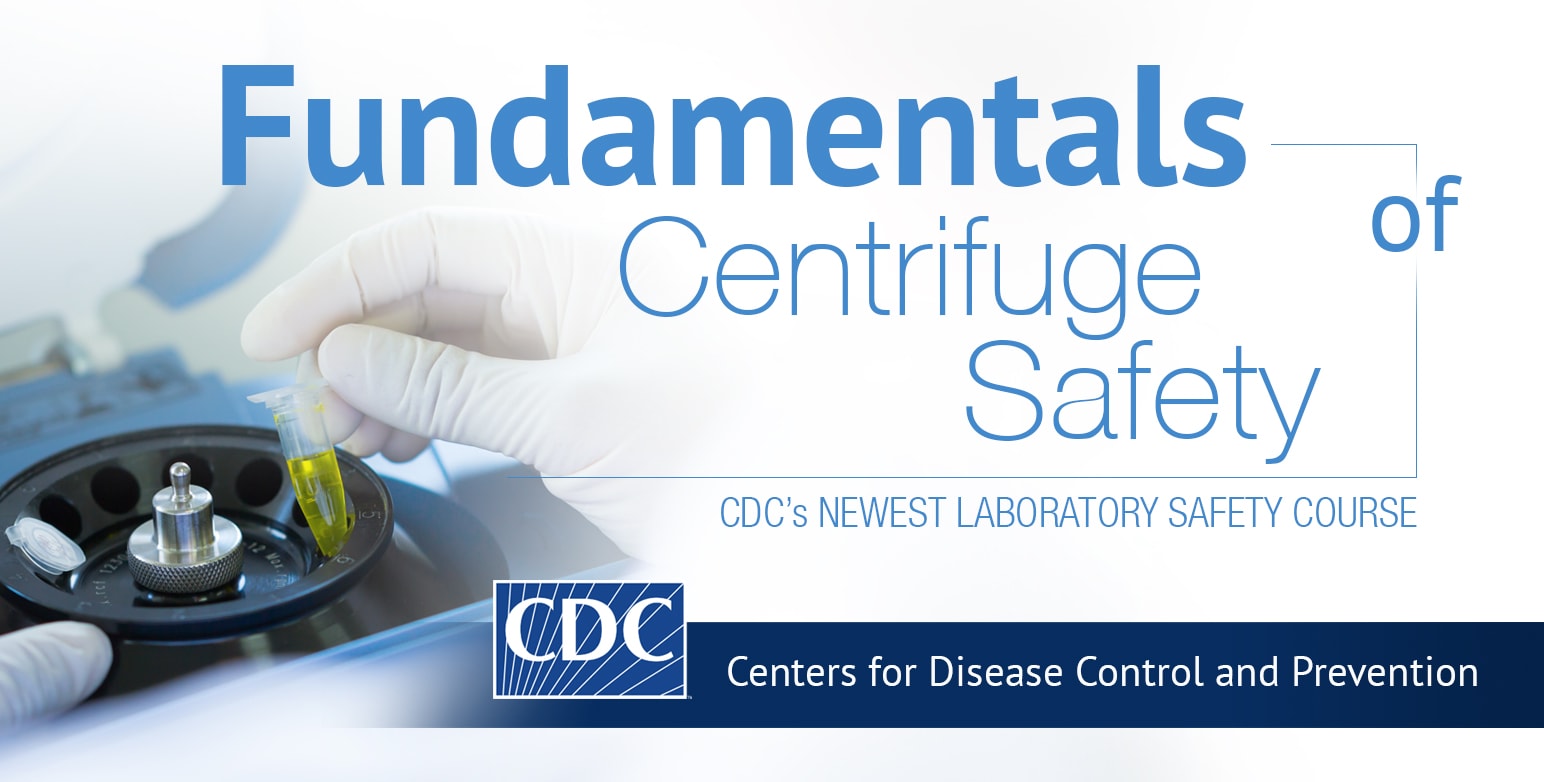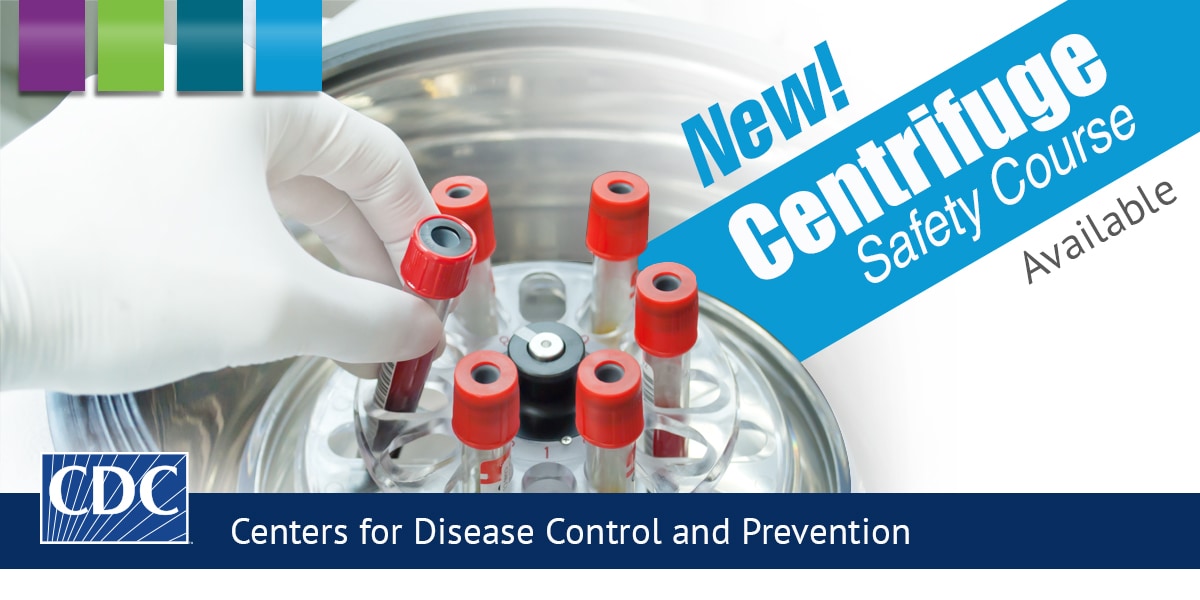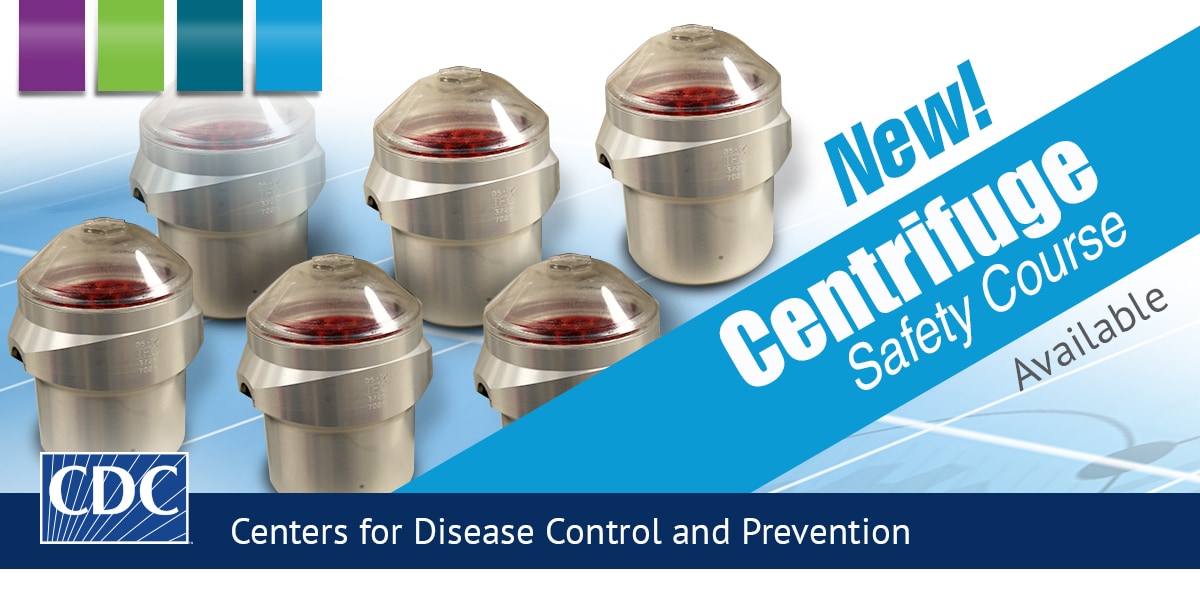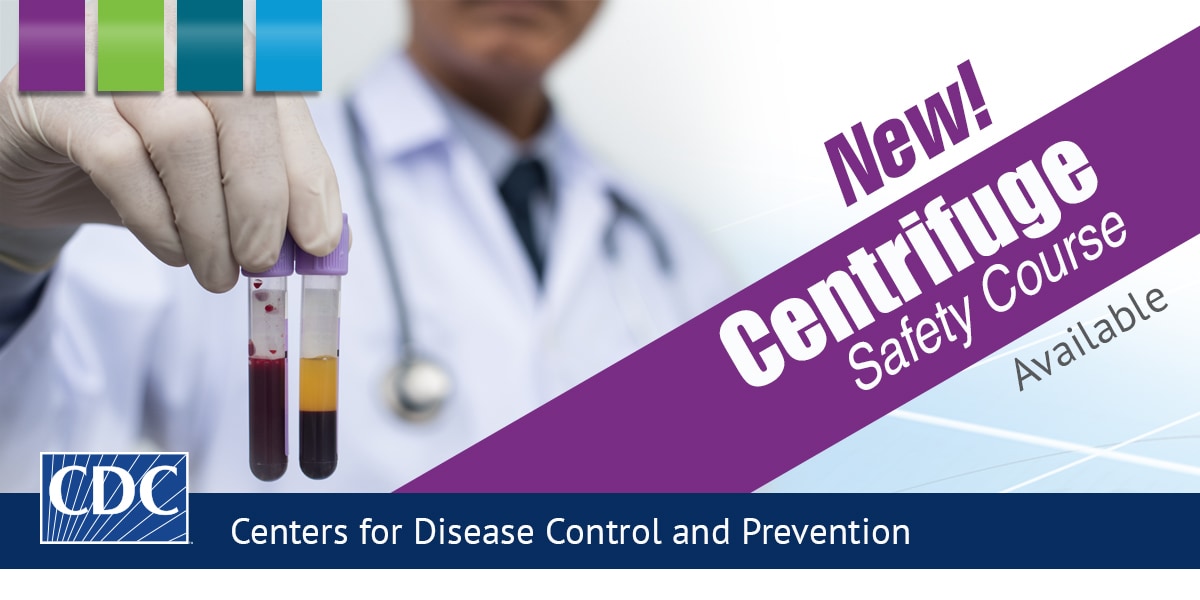Fundamentals of Centrifuge Safety

Short excerpt
Registration open for Fundamentals of Centrifuge Safety Course
CDC’s basic-level, free eLearning course provides general information intended to help laboratory professionals recognize and control hazards and risks associated with centrifuge use. Topics include safe work practices and what to do in the event of an emergency.
Visit the CDC’s Laboratory Training website to access the Centrifuge Safety Course for more information.
Long excerpt
Registration open for Fundamentals of Centrifuge Safety Course
Laboratory safety can affect the well-being of laboratory professionals who handle infectious microorganisms and hazardous materials, their families and people they interact with, and the environment. Centrifuges, which operate at high speeds, have great potential for injuring laboratory workers when used improperly.
On May 7, 2018, CDC launched the laboratory safety course, “Fundamentals of Centrifuge Safety.” It is one of several laboratory safety courses planned for release to the public free of charge.
This basic-level eLearning course provides general information intended to help laboratory professionals recognize and control hazards and risks associated with centrifuge use. Topics include safe work practices and what to do in the event of an emergency.
Course Objectives: At the conclusion of this program, the participant will be able to:
- Describe the potential risks associated with centrifuge use
- Identify control measures to minimize exposure to centrifuge risks
- Identify safe work practices for centrifuge use
- Describe what to do in the event of an emergency
Target Audience: Laboratory and safety professionals
Special Needs: Course content is closed-captioned where applicable and optimized for a screen reader.
CEUs: CDC’s Division of Laboratory Systems is approved as a provider of continuing education programs in clinical laboratory sciences by the ASCLS P.A.C.E.® Program. This course is approved for 1.0 contact hours. P.A.C.E.® course number: 288-007-17
CDC encourages everyone to become involved!
- Visit the CDC’s Laboratory Training website to access the Centrifuge Safety Course for more information.
- Share this Centrifuge Safety Course information through social media using the hashtag #LabHeroes and the URL http://bit.ly/2RnMpB9.
Thank you to the Association of Public Health Laboratories, American Society for Microbiology, and American Society for Clinical Laboratory Science for partnering with CDC to review and approve this course.
Spread the word about this course across your social media platforms and networks. Simply copy and paste these messages into your Facebook, Twitter, LinkedIn, and Instagram feeds. Right-click to save any of the images. Partner with CDC and promote Fundamentals of Centrifuge Safety. While you’re at it, retweet these messages to: @CDCgov.
Social Media Content
Right-click to save images (1200px x 600px).

So you think you can spin? Test your skills with the CDC’s new centrifuge safety course! #labsafety http://bit.ly/2RnMpB9
So you think you can spin? Test your skills with the CDC’s new centrifuge safety course! #labsafety http://bit.ly/2RnMpB9
You’ve never taken a spin class like this before! Brush up on your centrifuge skills through CDC’s new safety course! #labsafety http://bit.ly/2RnMpB9
Before taking your centrifuge for a spin, CDC suggests first taking this new centrifuge safety course! #labsafety http://bit.ly/2RnMpB9

Calling all spin doctors – check out the new CDC Centrifuge Safety Course! #labsafety http://bit.ly/2RnMpB9
Calling all #LabHeroes! Check out the new CDC Centrifuge Safety Course. http://bit.ly/2RnMpB9
CDC has a new and free centrifuge safety course available now. #LabHeroes: give your superpowers a boost! http://bit.ly/2RnMpB9
The Division of Laboratory Systems supports our #LabHeroes! Check out the new centrifuge safety course. http://bit.ly/2RnMpB9

One way of containing potentially harmful biological agents when working with centrifuges in a laboratory is the proper use of the safety centrifuge cup, an enclosed container designed to prevent aerosols from being released during centrifugation. Learn about the safety cup and more in CDC’s new Centrifuge Safety course! http://bit.ly/2RnMpB9
Did you know? Sample tubes on the opposite sides of a laboratory centrifuge rotor must be equal in weight or it might result in damage to the equipment or even injury to the lab professional. Learn about this and more in CDC’s new and free Centrifuge Safety course! http://bit.ly/2RnMpB9